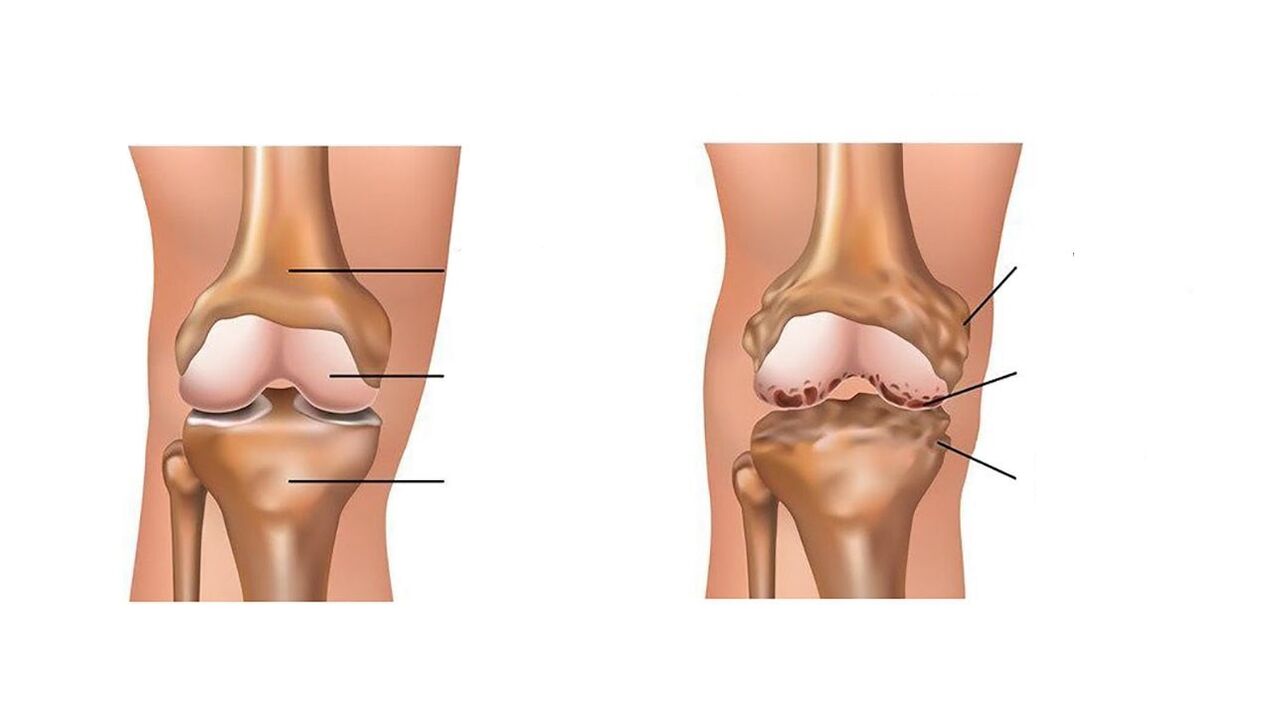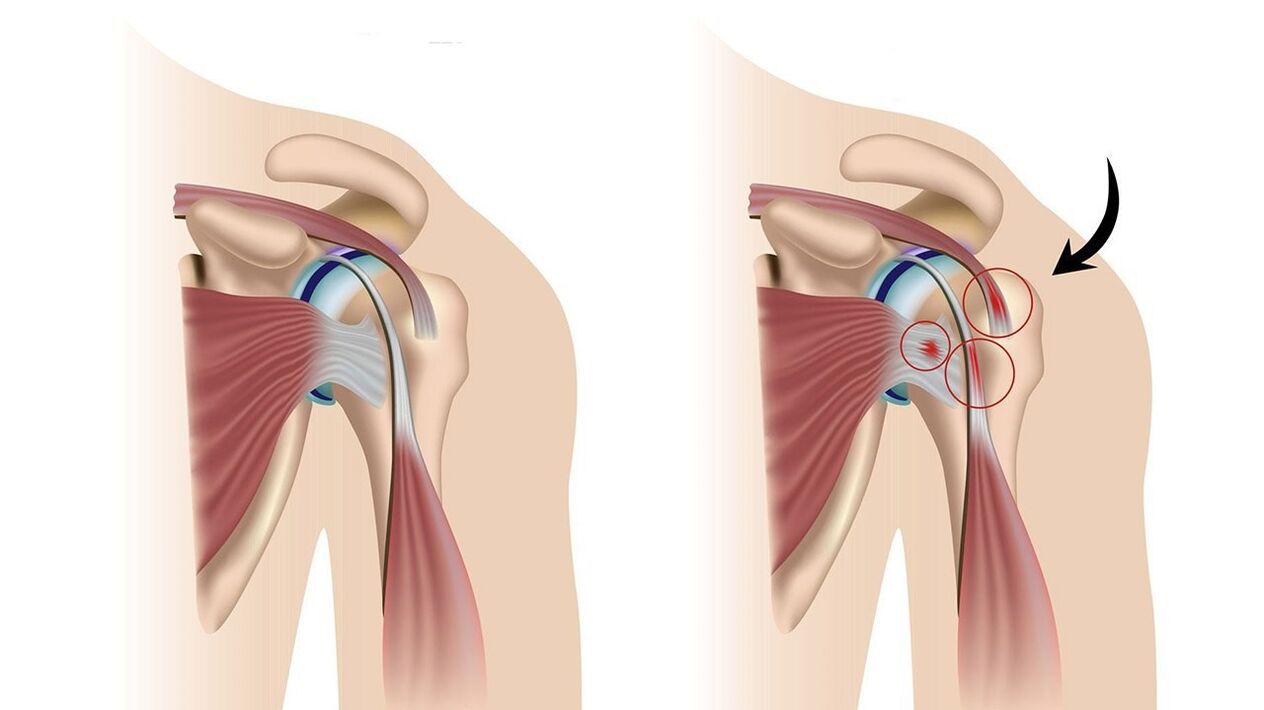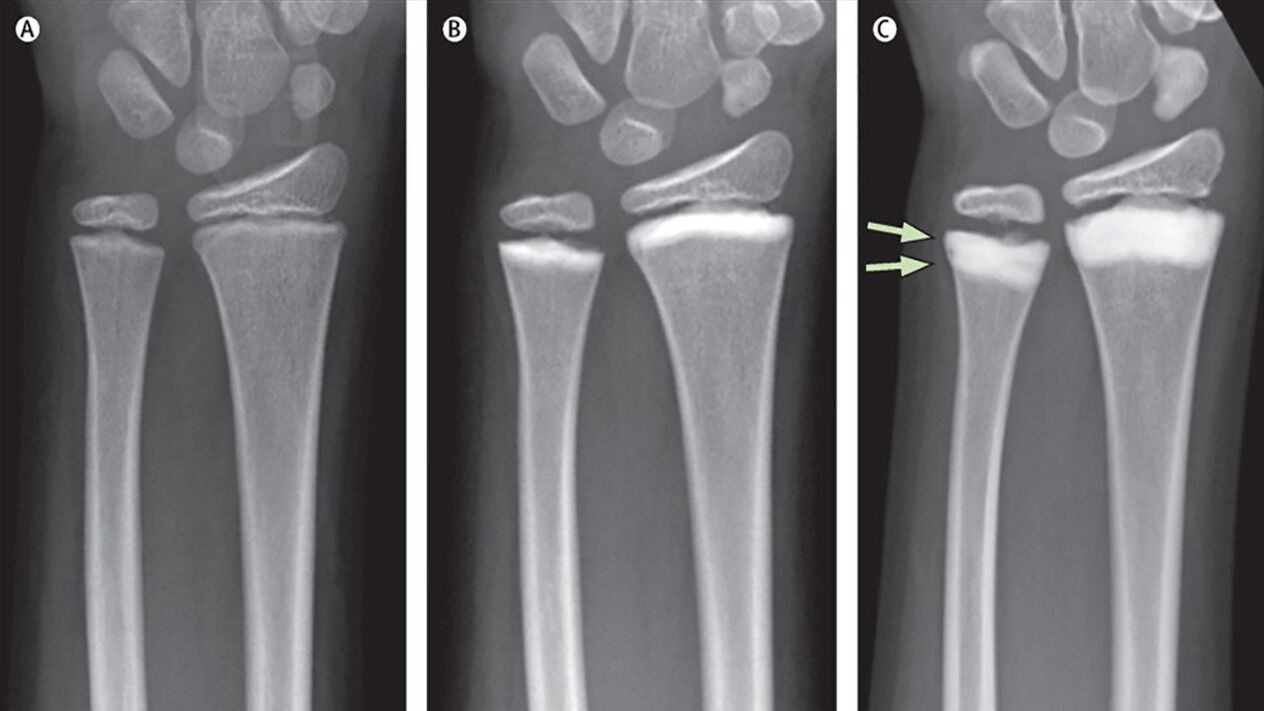Symptoms: joint pain.

Possible causes: trauma, arthritis, osteoarthritis, osteoarthritis.
Physician: The therapist records the complaints, sends them for examination, and based on the results will refer the patient to a doctor with a narrower specialty.
Treatment: is determined individually in each case.
Prevention: reduction of joint load, maintaining a healthy lifestyle, timely examination by a doctor, diet.
Why do joints hurt?
Joints can be damaged for two reasons: arthritis, inflammation of the tissues in the joint, or osteoarthritis, a degenerative-dystrophic process, ie the destruction of the bone-cartilage elements of the joint. The diagnosis should be made by a doctor, but you can manage the symptoms yourself.
Inflammation in arthritis is like a forest fire: it all starts violently, the joint is very swollen and painful even at rest, and the pain intensifies when you try to do the slightest movement. The skin in this area turns red and becomes warm to the touch.
Everything is different with osteoarthritis: the joints are destroyed slowly and imperceptibly at first. Joint pain, which is initially mild, painful, occurs only during movement, is very tolerable, increases over time, becomes persistent and severe enough to disturb peace and sleep. The insidiousness of this pain is that it is delayed due to the pathological process in the joint, and only when X-rays show signs of destruction of the relevant joint, it is, unfortunately, irreversible. These include the spread of thorns (marginal osteophytes) along the edges of the joint surfaces that make up the bone joint, narrowing of the joint space, and signs of osteosclerosis - areas of pathological increase in bone density. If osteoarthritis affects a joint, say a knee, it changes biomechanically, and adjacent joints - the hip joint and ankle - are damaged. They face increasing and at the same time, uneven loads and as a result wear out faster. Thus, osteoarthritis affects the joint from joint to joint, and the pain intensifies and can spread to all new joints.

Types of pain
The type and nature of the pain depends on the cause.
Joints suffer from influenza and acute respiratory infections against the background of high temperatures (up to 40 ° C). This pain goes away on its own as soon as the temperature returns to normal and does not require special treatment.
For arthritis pain:
- iti,
- painful,
- pulsating
- fire,
- occurs at rest and intensifies when performing certain movements,
- give to neighboring territories,
- During probing (palpation) it hurts everywhere, on the entire surface of the joint, but especially along the joint space.
Periarthritis is especially intolerable - inflammation of the tissues around the joint (sacs, tendons and ligaments). How everything happens can be explained by the example of the shoulder joint. At first, the joint begins to ache. The pain quickly becomes unbearable, almost unbearable. It extends to the shoulder blade and neck area, intensifying as you try to extend your arms to the sides at shoulder level or bend at the elbows and bring them behind you (and is often accompanied by a crisis). There are pain points at the end of the clavicle and in the same place at the back, resting on the anterior shoulder joint. The pain increases when you press them with one finger. With such sharp sensations, the joint needs to be immobilized - the hand should be hung on a cover, try not to move it. This is an important condition for the success of treatment.

It is important! Choose an adequate analgesic and anti-inflammatory therapy as soon as possible after the examination. This will reduce the severity of joint inflammation, reduce pain and improve quality of life.
Joint pain is different with osteoarthritis:
- The pain is mild and inconsistent at first, the character is a wave - in certain periods there are no weeks or even months. But over time, without treatment, the waves of pain intensify and become more frequent, and the gaps between them narrow.
- Initially, the pain: the explosion occurs in an attempt to take the first step, raise the arm, bend. Then the joints appear to be developed and the pain is reduced.
- Mechanical rhythm - joint pain when loading. Initially, the pain is caused by high loads - lifting weights, running up stairs, walking for a long time, playing sports. Then even small movements reflect the pain. But at the same time, unlike the unpleasant feelings in arthritis, the pain in osteoarthritis gives peace to the joint when you give it a rest. That's why doctors talk about a mechanical rhythm: movement causes pain, and rest relaxes it.
- Anxiety at night. There is no such pain at rest, but it is annoying to lie, always change your posture, find a situation where the joints and spine can forget, but it does not work. The joints hurt and that's it! Morning handcuffs: woke up, no pain yet, but as if you were chained or tightly wrapped - the joints do not obey, but gradually the feeling of stiffness disappears, the range of motion in the joint is restored.
- Protective posture. When you have a joint pain, you want to get a so-called antalgic-analgesic condition, which is made easier. This is best seen in the lumbar pattern: it also consists of joints. When one of them is stuck, and at the same time a nerve root enters the skin of the bone, there is a sharp pain at the base of the sciatica. Anyone can diagnose a sciatica patient after seeing how a poor man is distorted. In fact, with the help of this "skewness", supported by muscle spasms, the body tries to minimize pain.
Hip and knee osteoarthritis
With damage to the hip joint, the pain (and in most cases suffers on one side) is localized to the upper thigh and spreads to the knee. He usually gets sick in the second half of the day, when he is already working hard. The pain increases with walking and weakens and disappears at rest.
The knee joints most often suffer from both at the same time. They bend easily and begin to ache when bent. It is characteristic of a knee lesion called the stair symptom. Getting down from it is more painful than climbing; patients do this by turning aside. Sometimes the joint is bent due to the growth of bone (osteophyte) or a piece of it (even such a "lost" piece of bone inside the joint is called a "joint mouse"). A joint blockage is accompanied by increased pain when trying to bend or straighten it.
Knee mobility problems are not always associated with arthritis. Sometimes wearing joints can be a "lie". Among the most common causes of Pseudoblock directory:
- Edema (excess fluid in the joint capsule can prevent the joint from fully bending and stretching).
- Inflammation (inflammation of the tissues of the knee, such as rheumatoid arthritis and gout).
- Improper movement of the joint cover in the joint (accompanied by severe pain).
- Irritation of the tissue inside the joint.
- Knee Injury (Any serious knee injury, such as sprains, can cause muscle spasms).
It is important! If the joint is blocked, it is necessary to seek medical help from an orthopedic traumatologist as soon as possible - an ambulance, a clinic, a hospital. Do not hesitate to call an ambulance - this is a good reason to call, because you will not go far with one foot, and you will not even be able to come to the clinic yourself.
Diagnostics
Depending on the nature of the pain and the appearance of the affected joint, an initial diagnosis (arthritis or osteoarthritis) can also be made by a non-specialist. But hurry to the district clinic to confirm the hypotheses!
Which doctor should I see?
In case of joint pain, you should make an appointment with a local therapist. Performs the functions of a medical dispatcher: records complaints and clinical symptoms, directs the patient for examination and, based on the results, decides which doctor to refer to each patient. Many specialists are involved in joint health protection:
- arthrologist
- orthopedic traumatologist.
- rheumatologist.
- vertebrologist (if the joints of the spine are affected).
- podiatrist (when it comes to the joints of the foot).
- surgeon.
- oncologist.
- neurologist (if the joint has already been treated, but the pain remains in it).
- dietitian (if you have joint pain or are overweight due to metabolic diseases such as gout).
What tests should be passed and research done?
The examination begins with the simplest - a clinical (finger) and biochemical (vascular) blood test for signs of inflammation, as well as a general urine test. In some joint diseases, the kidneys are involved in the pathological process. Too much uric acid in the urine may indicate that gout is the cause of joint disease.
Laboratory examination of the synovial fluid inside the joint helps to detect the inflammatory process and clarify its nature. The joint is obtained by piercing the capsule - piercing. If necessary, histological examination of a part of the synovial membrane, which repairs the joint cavity from the inside, is performed.
A proven diagnostic method is radiography of the joint in two standard prognoses. It will help to visualize the narrowing of the joint space, bone growth, osteoporosis and osteosclerosis (places where bone density decreases and increases).

Currently, comprehensive information about the condition of the joint is provided by magnetic resonance imaging.
What joint diseases can cause pain?
There are more than a hundred such diseases. Osteoarthritis is widespread in the elderly, and rheumatoid arthritis and injuries in young people (bruises, fractures, garden injuries).
"Along with arterial hypertension, commonly known as hypertension, joint disease is one of the most common reasons for seeking medical attention. Chronic pain, in which patients experience and cannot fully function and live at the same time, is not only a medical but also an important social problem, " says medical scientists. - Arthrosis is the most common of all joint diseases. 97% of people over the age of 65 suffer from it. And if we talk about chronic inflammatory diseases of the joints - arthritis, rheumatoid arthritis comes to the fore. It is also not a gift andnot just because of the pain syndrome: 3-5 years after the onset, this type of arthritis inevitably ends with the appointment of a disability group to the patient. "
How to get rid of joint pain immediately?
Analgesics are able to relieve pain quickly: if you do not want the pain to become chronic, you can not tolerate the pain. This metamorphosis can occur very quickly - in 3-4 weeks, so getting rid of joint pain should be an urgent task. The joint begins to ache as it puts stress. Therefore, when there is pain, a non-steroidal anti-inflammatory drug (NSAID) with a good analgesic effect should be taken half an hour before any physical activity.
If joint pain increases at night, in addition, before going to bed, the doctor recommends taking metamizole sodium, as well as drotaverine, which contains nicotinic acid, to improve local blood circulation.
Local therapy
NSAIDs have a terrible side effect - they can damage the gastric mucosa until ulcers form, so they try to apply them topically as part of all kinds of ointments and gels with anti-inflammatory and analgesic properties. They are usually rubbed on the skin of the affected joint twice a day. The pain is also relieved with special plasters that are magnetic powder and glued to the joint or spine.
What happens if the joints are not treated?
When left untreated, joint disease can lead to loss of freedom of movement and disability. If one or more large joints are affected, they can be replaced with artificial joints. Many joint injuries (polyarthritis) are usually the result of a common disease of the body, such as psoriasis. In this case, the onset of the disease is more dangerous, because it progresses rapidly and can quickly take your life.
The result
Joint pain is familiar to almost everyone and occurs for two main reasons - due to inflammation (arthritis) or destruction of bones and cartilage (arthrosis). Interestingly, the joints in the arms and legs hurt in different ways. In the upper parts, unlike in the lower parts, it is generally not the joints themselves that are affected, but the surrounding tissues (tendons, ligaments, sacs). This is due to the different types of loads that the arms and legs experience - dynamic and static. It is necessary to fight joint pain from the first day: in the next 10-15 years, the probability of disability will satisfy very few people. As part of the prevention of joint disease, it is important to lose extra weight to reduce joint stress and combat accompanying pathologies (allergies, diabetes).
































